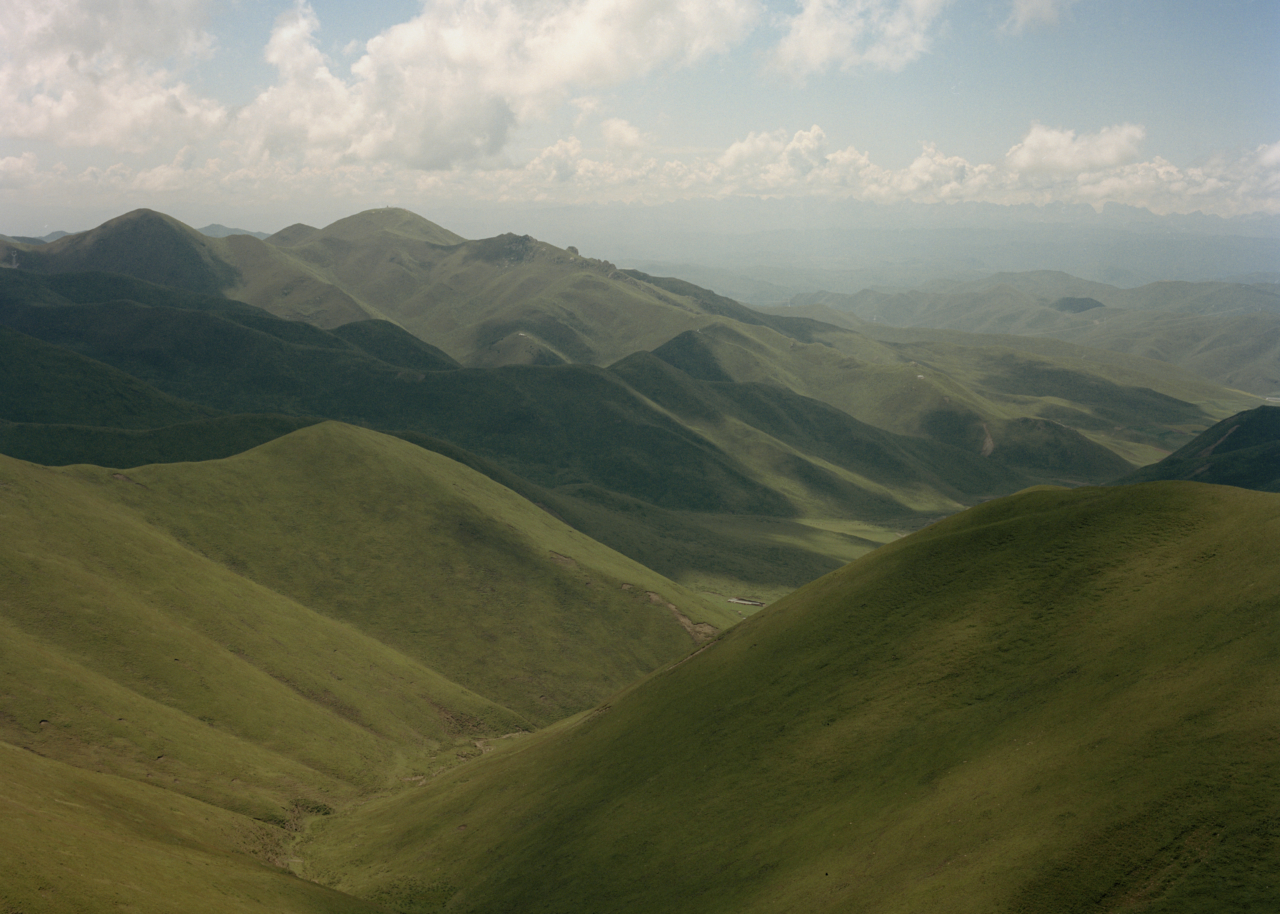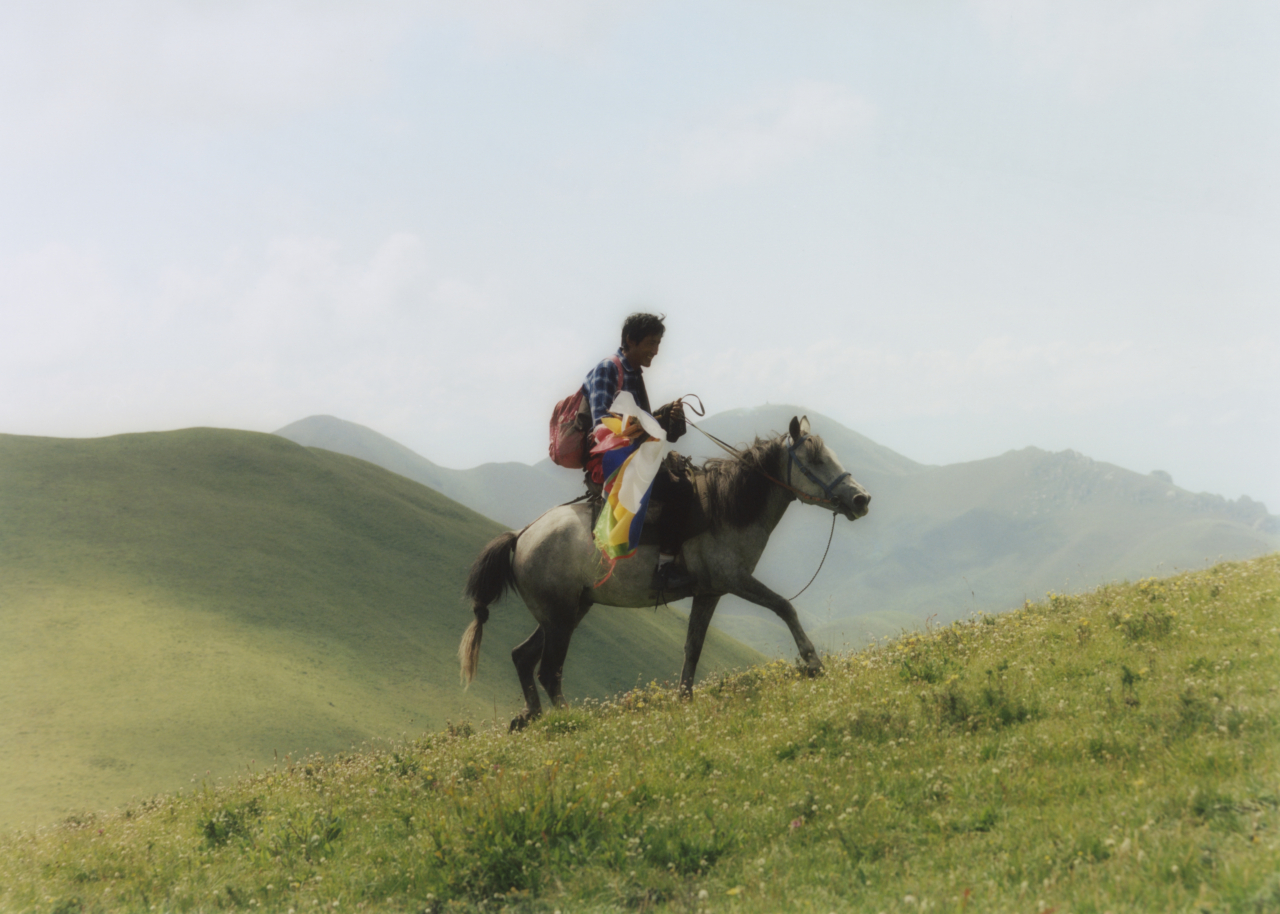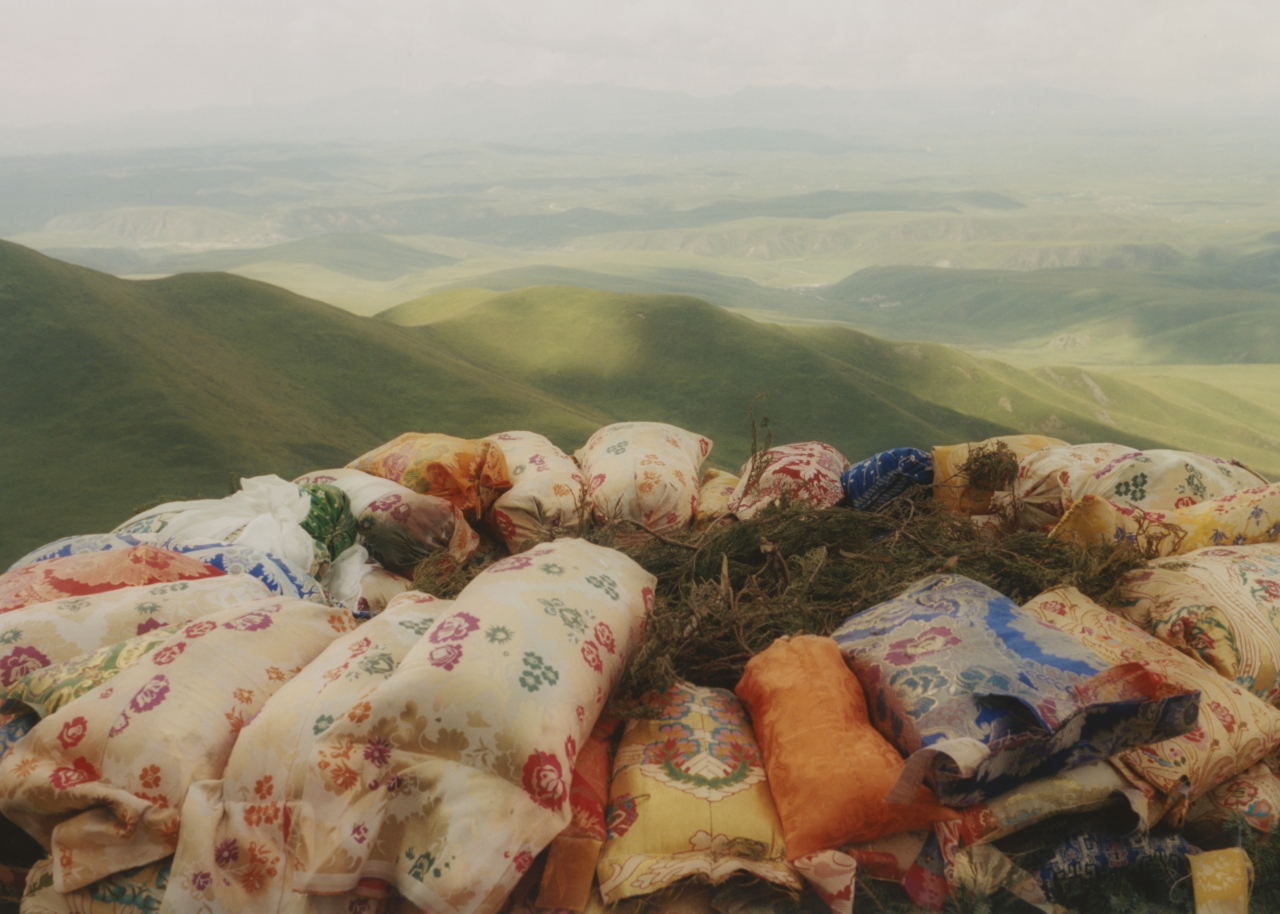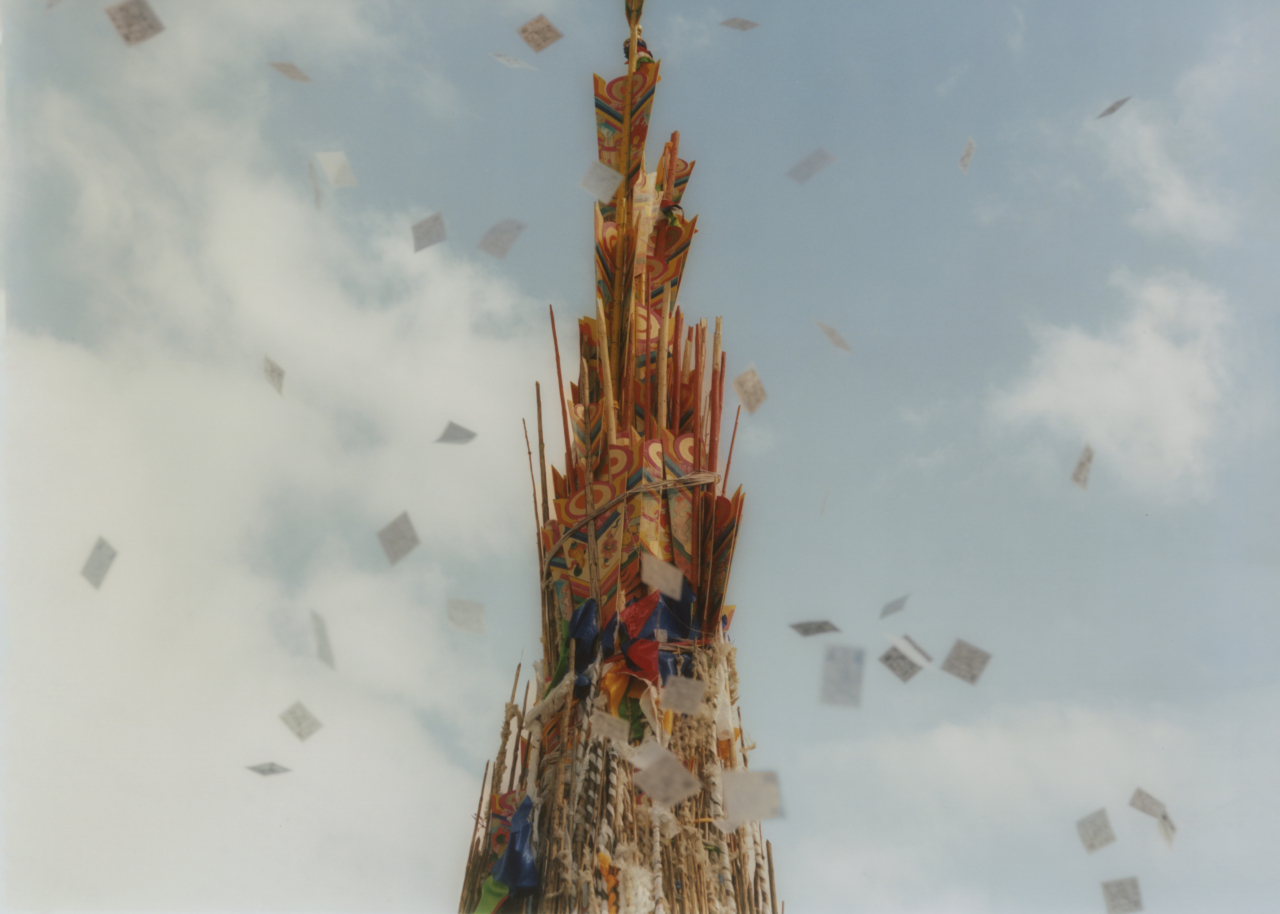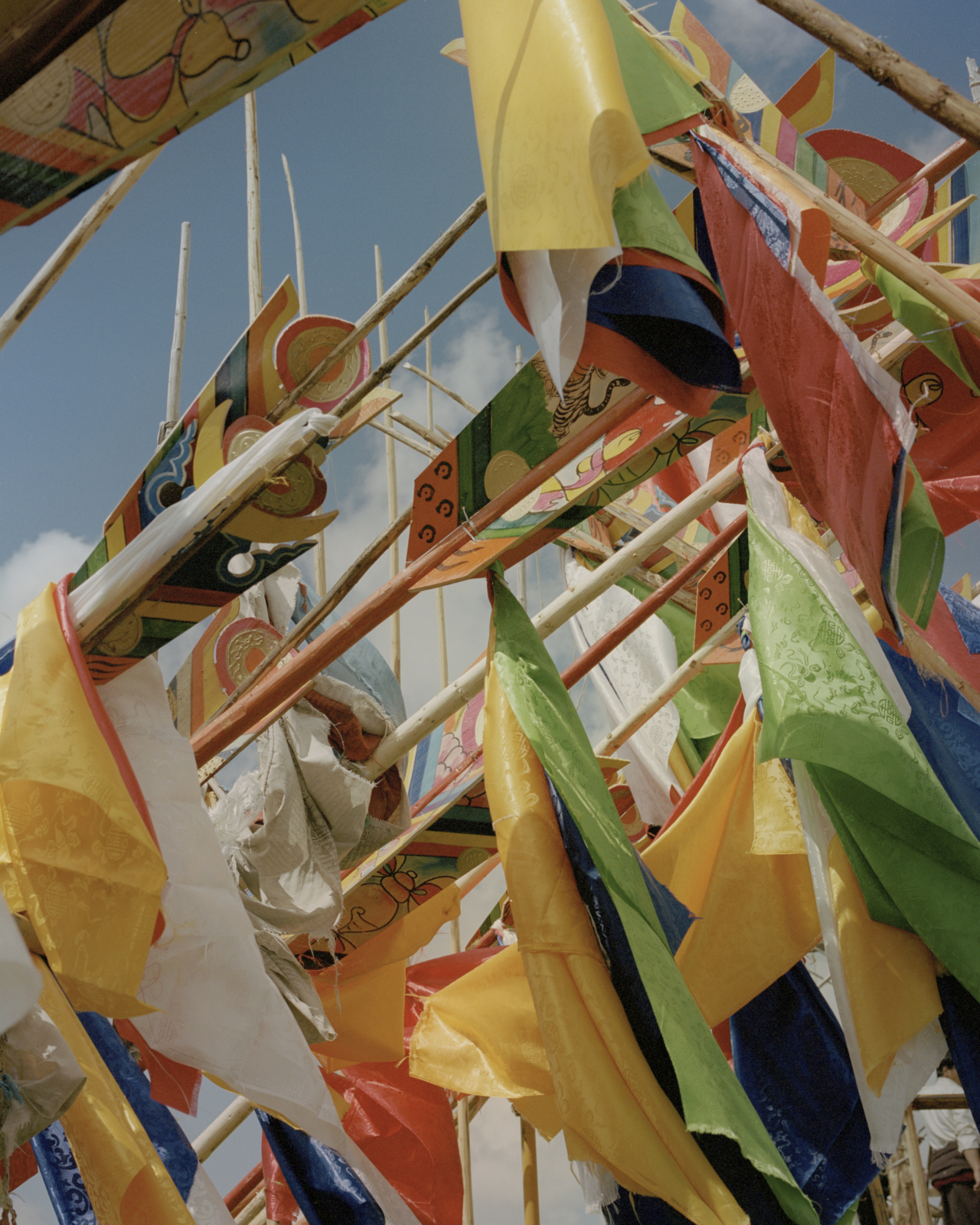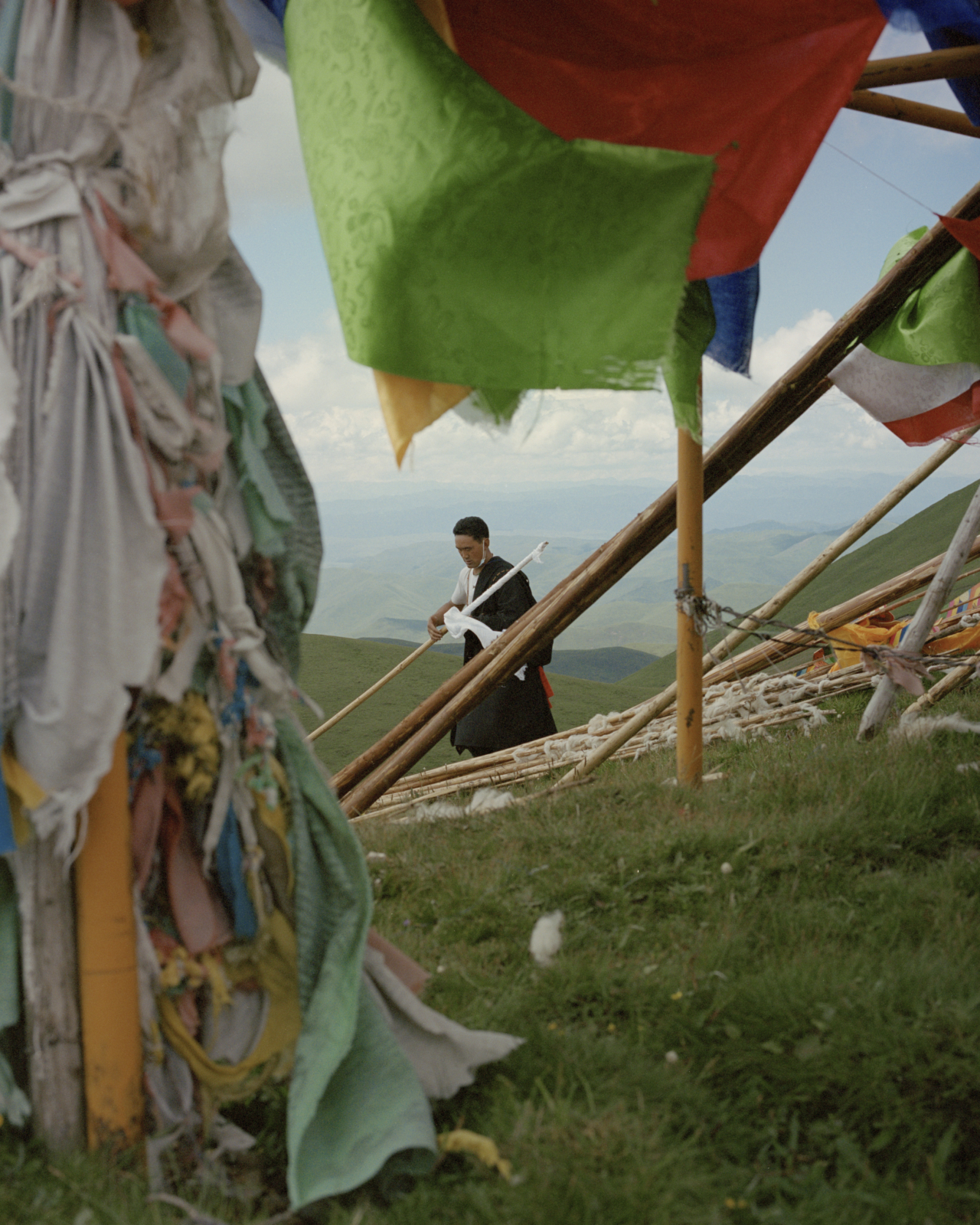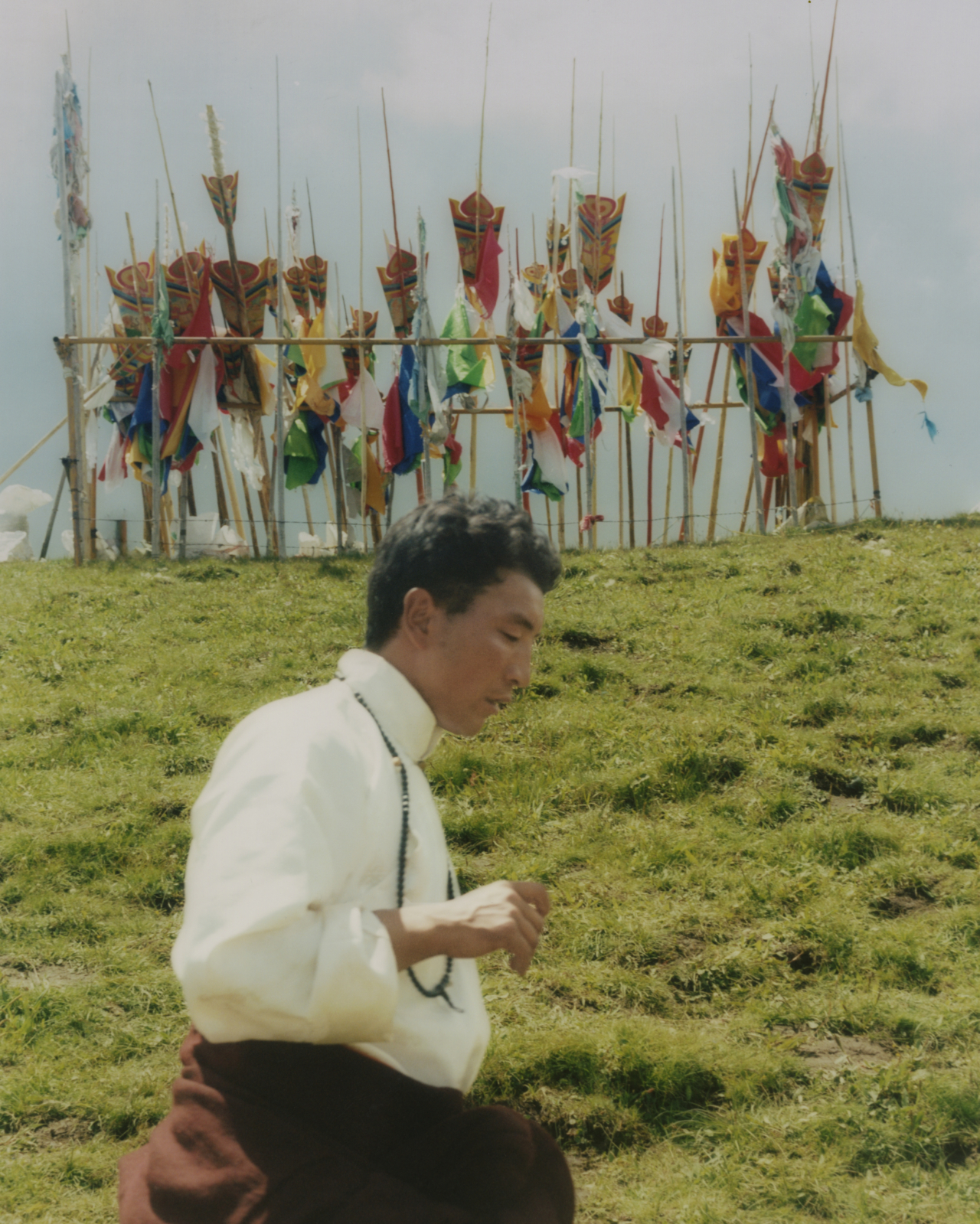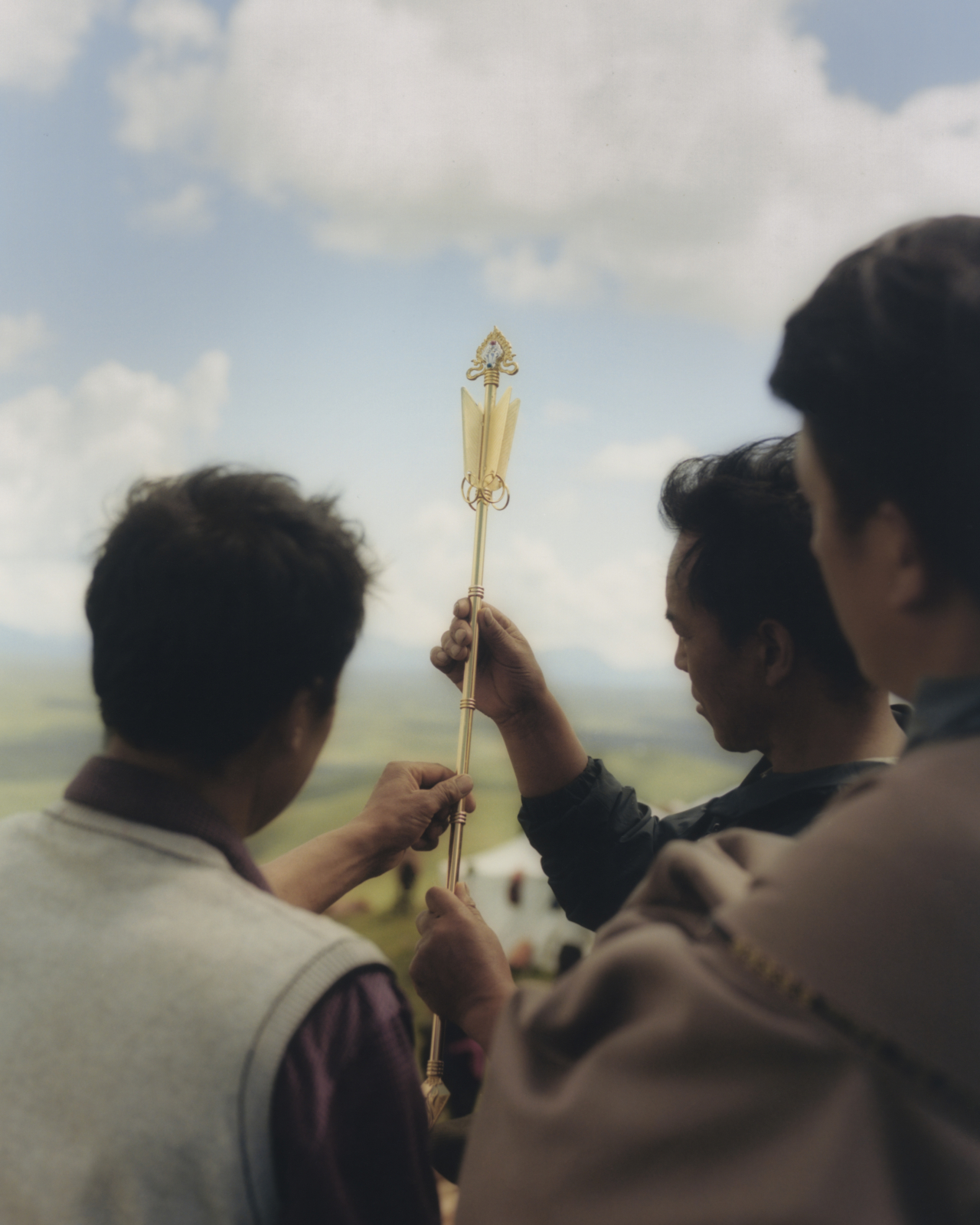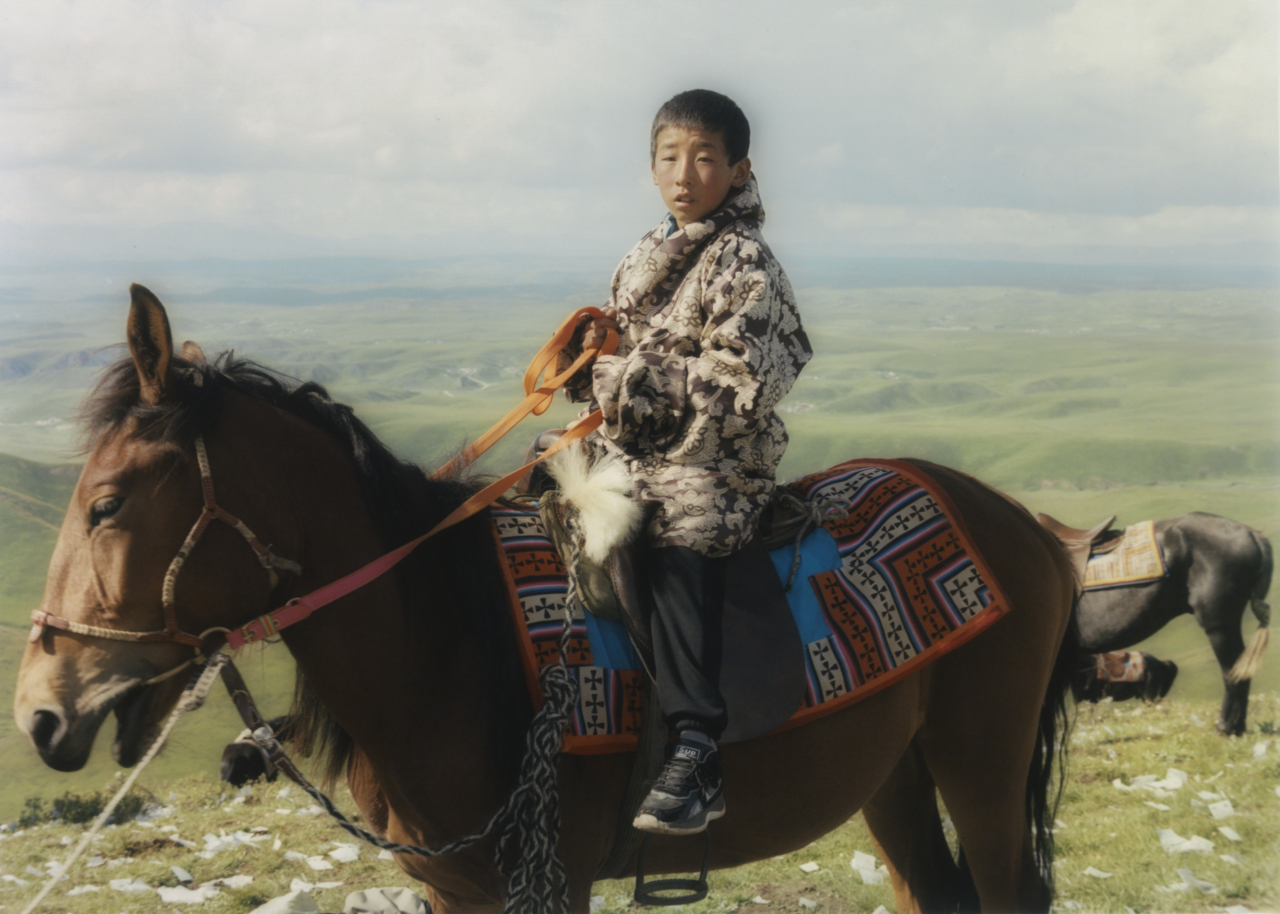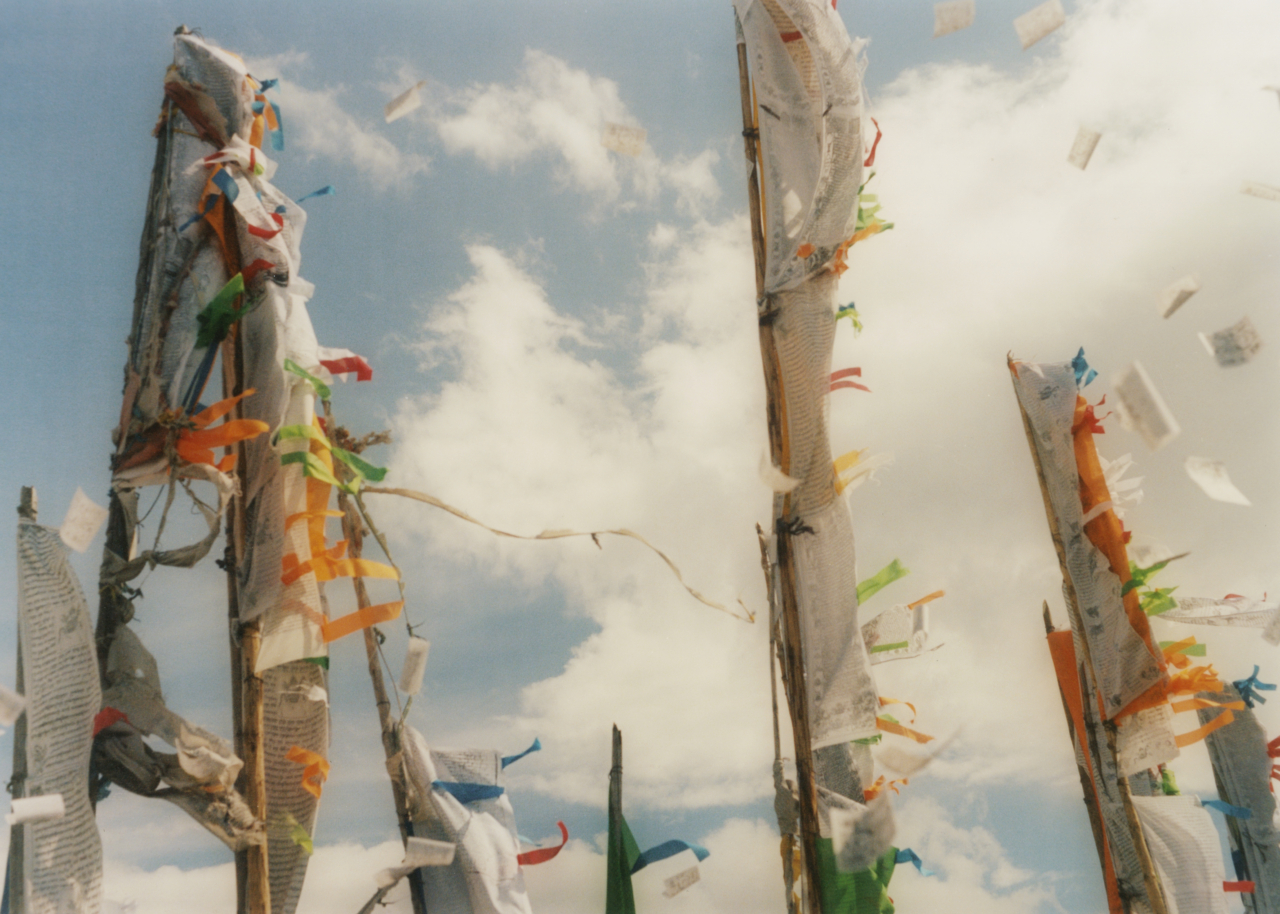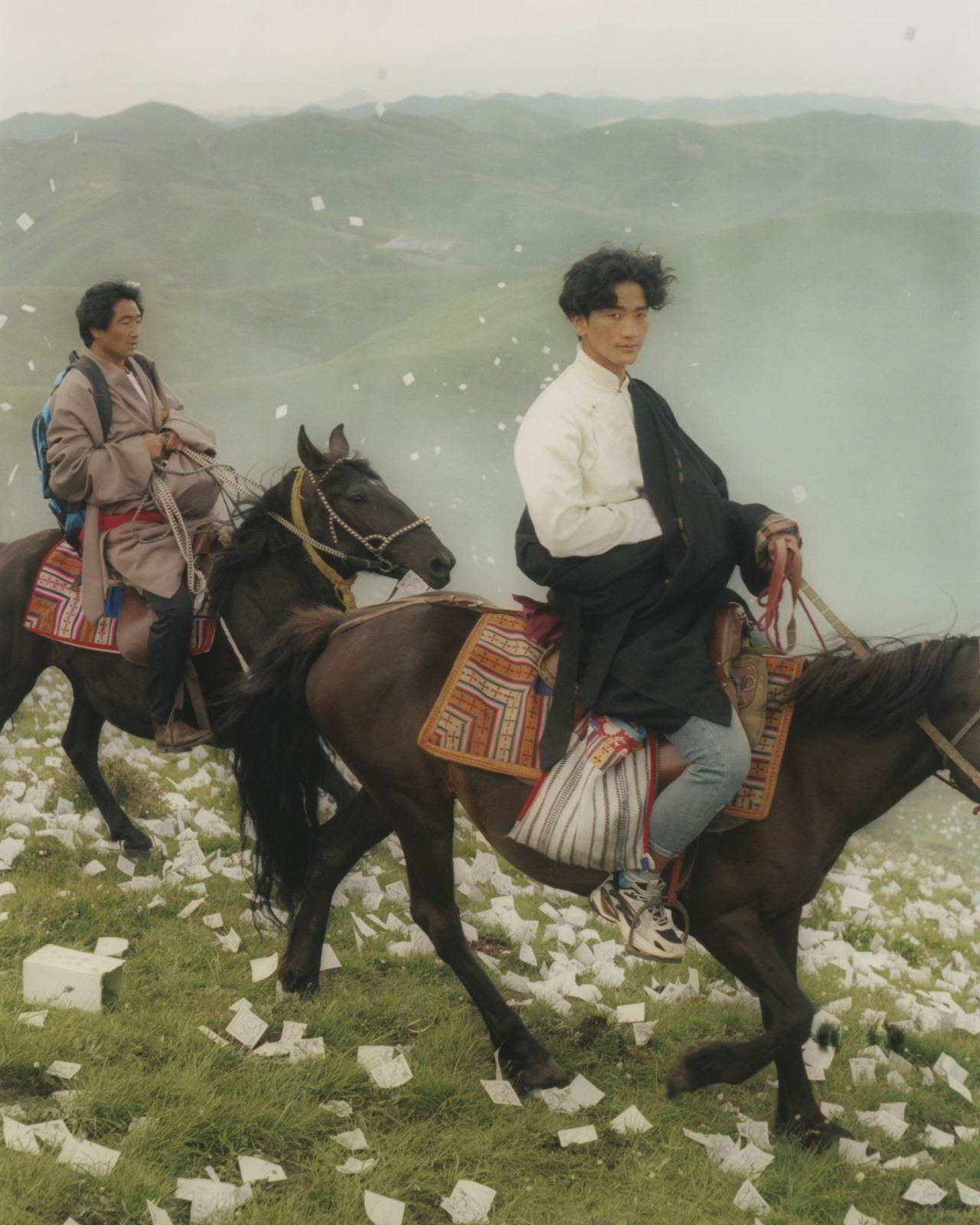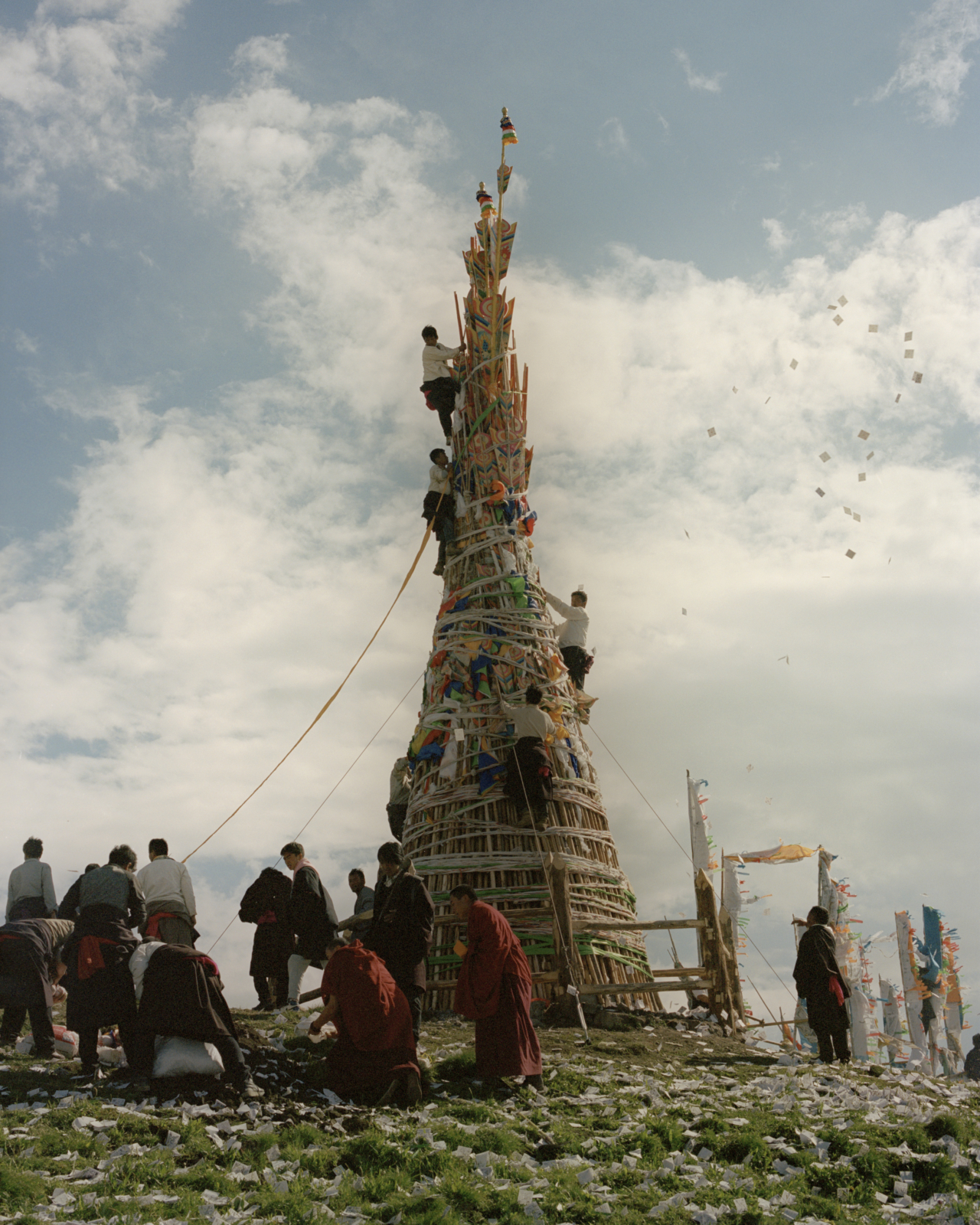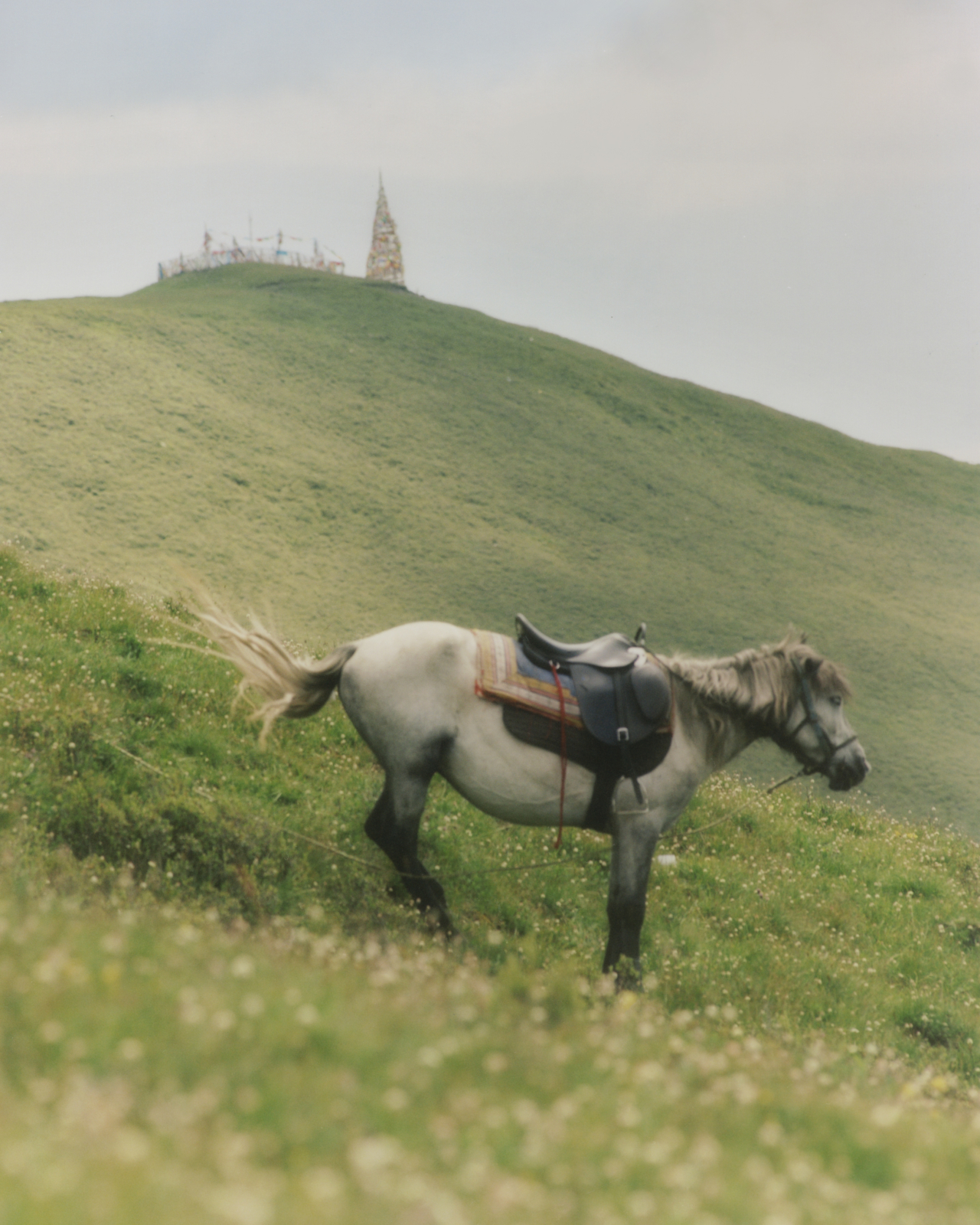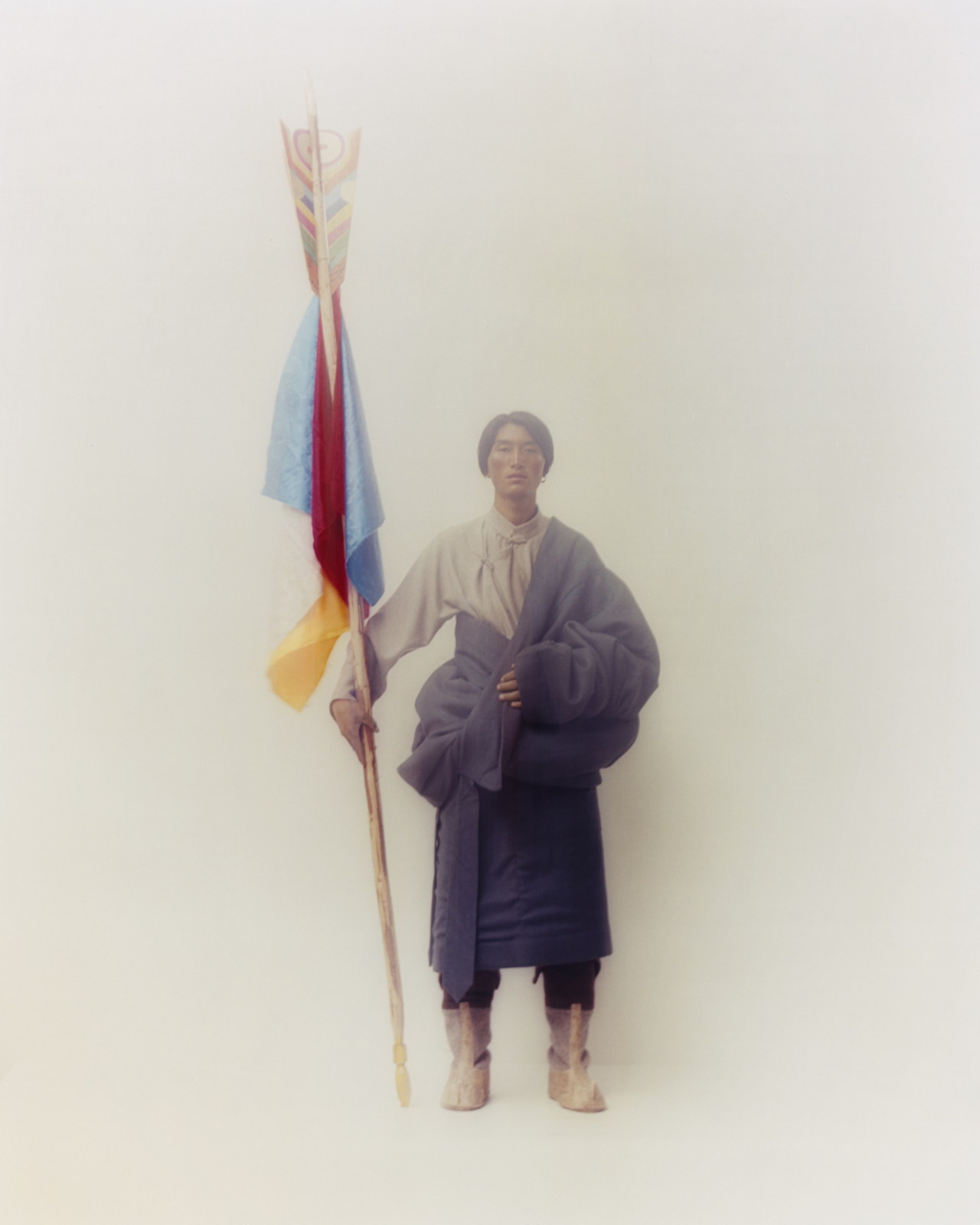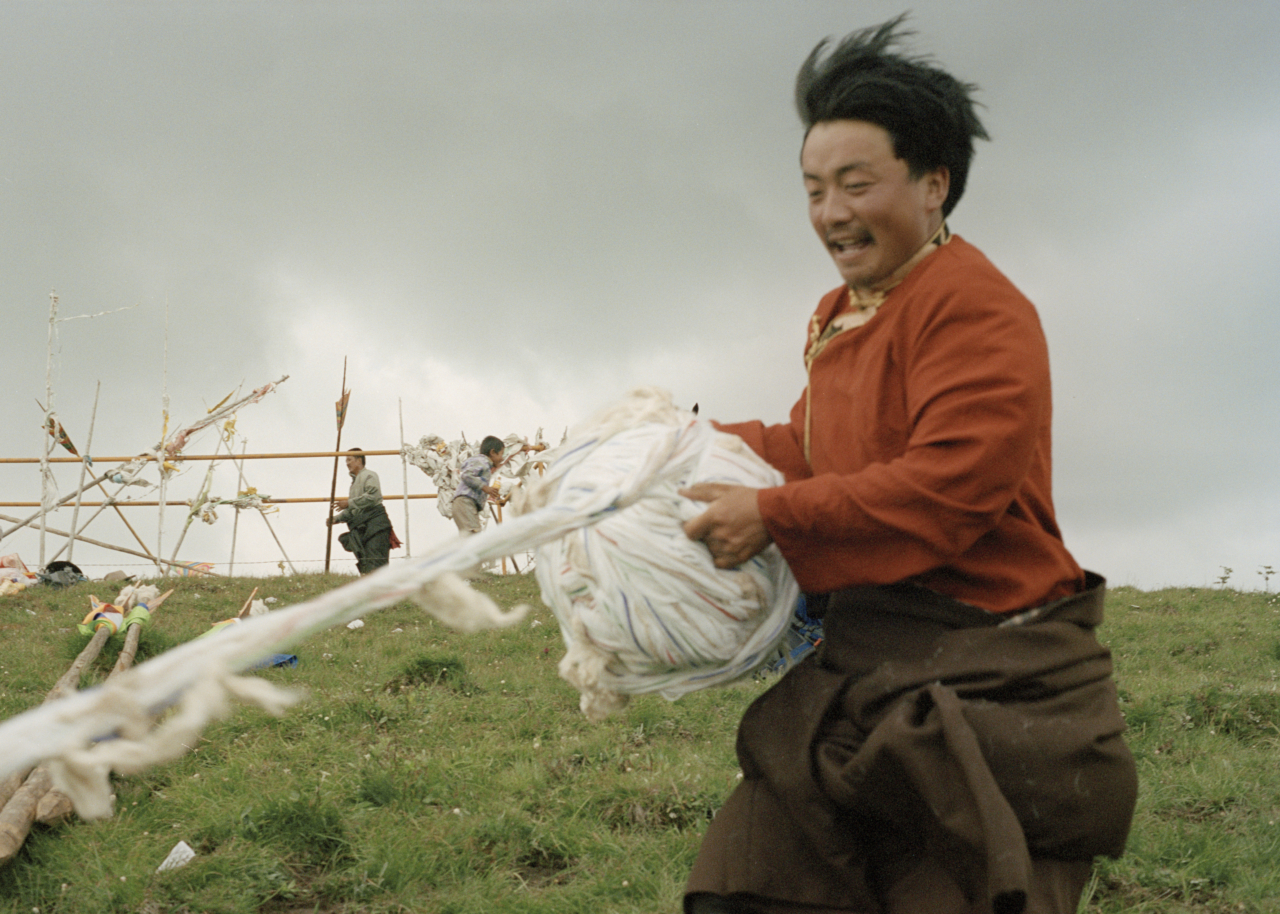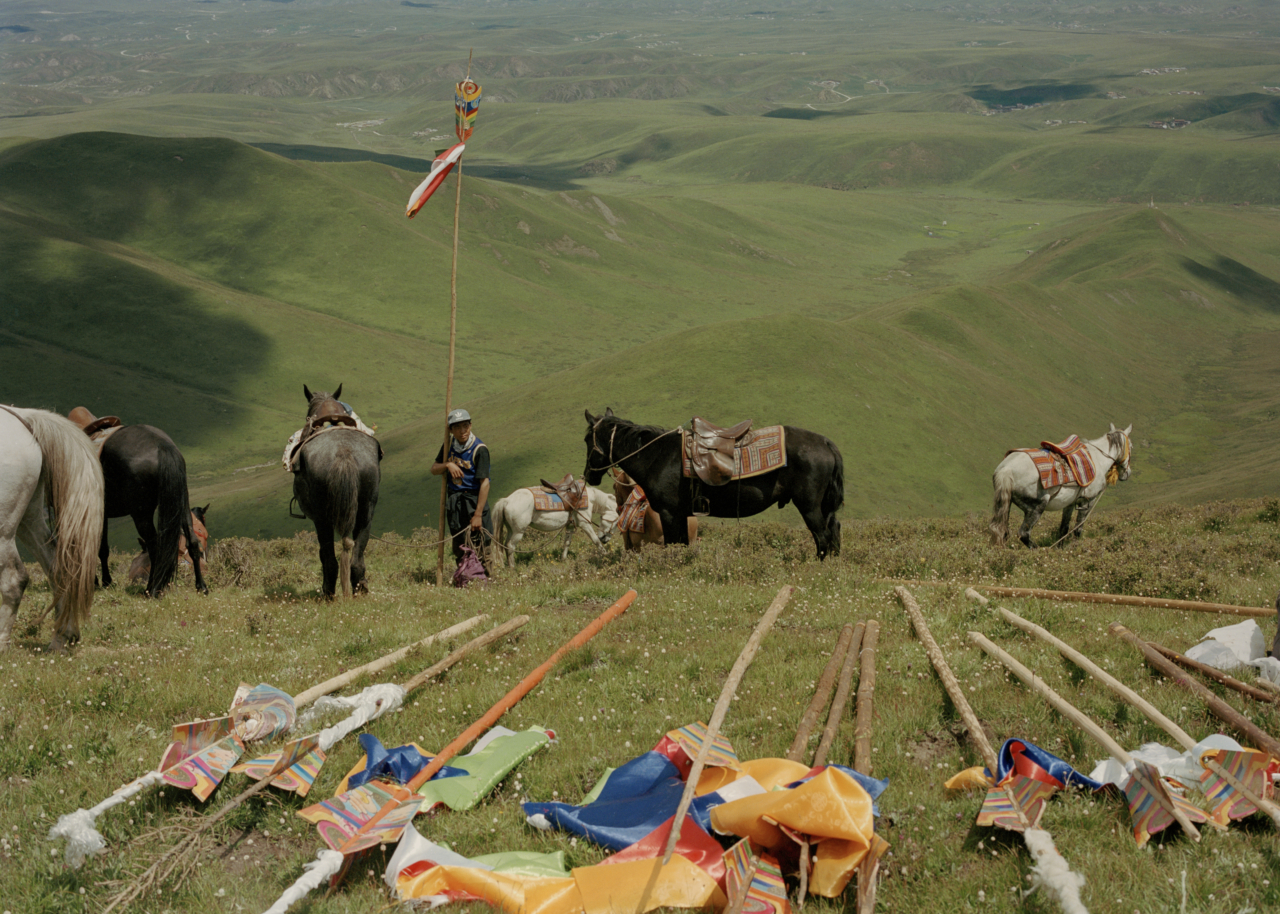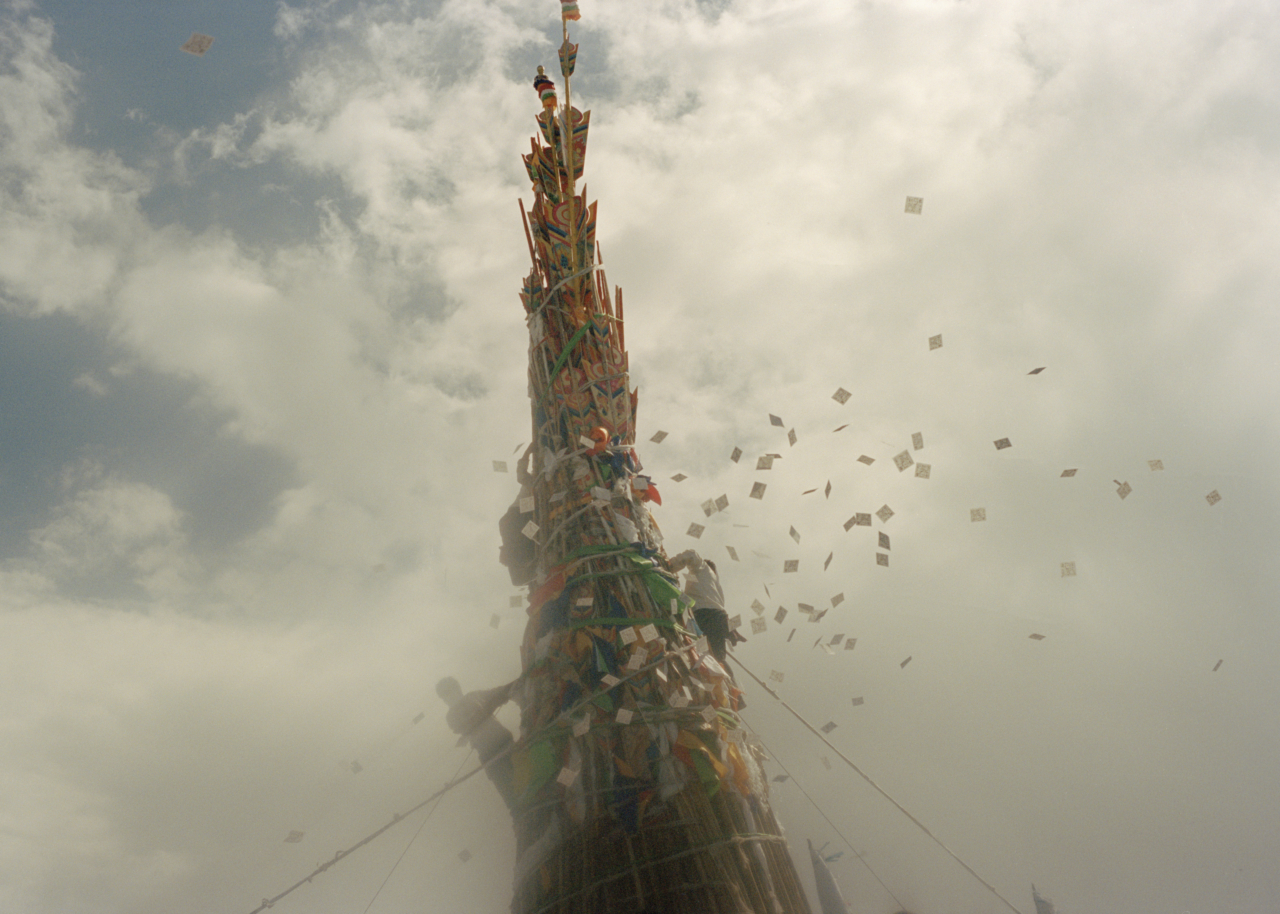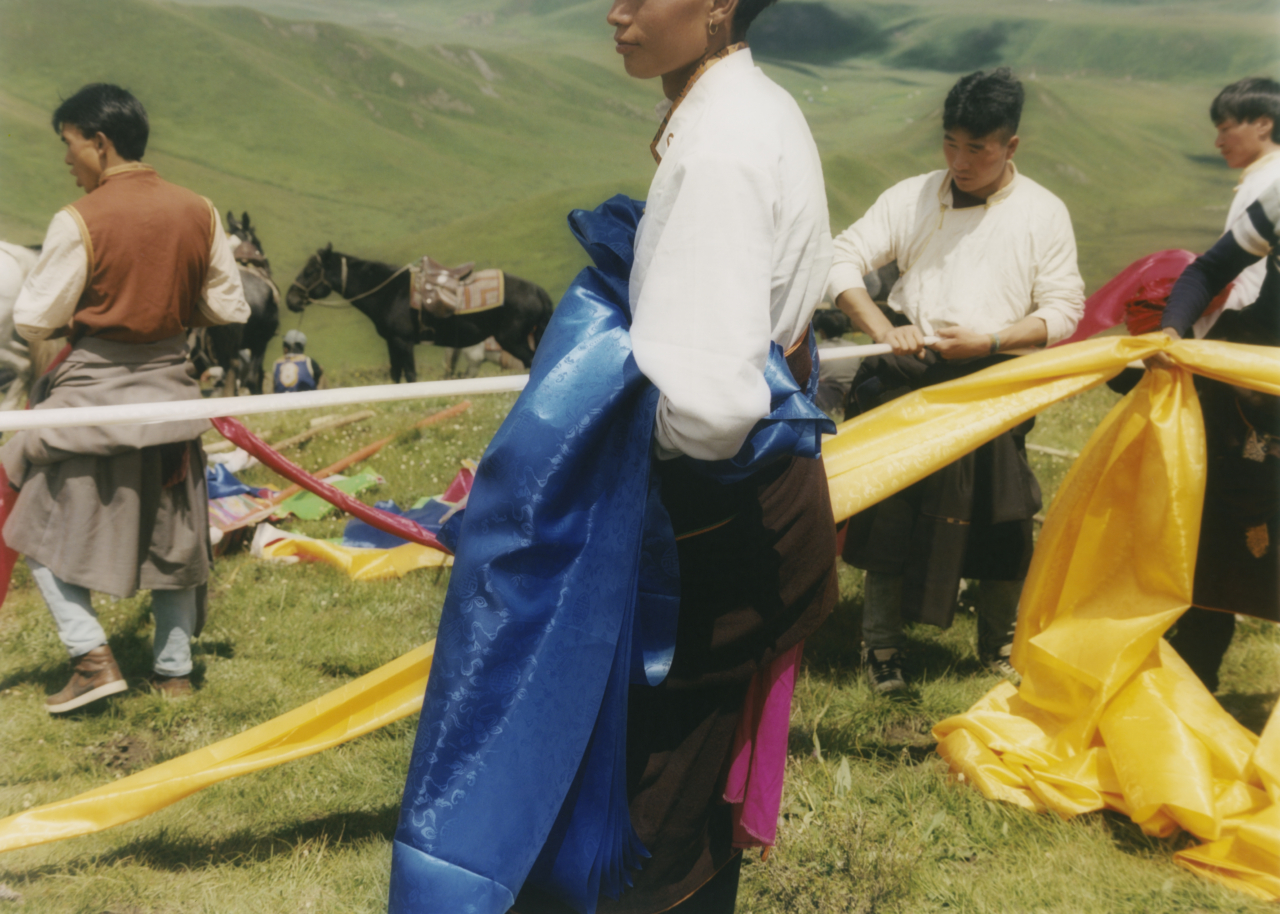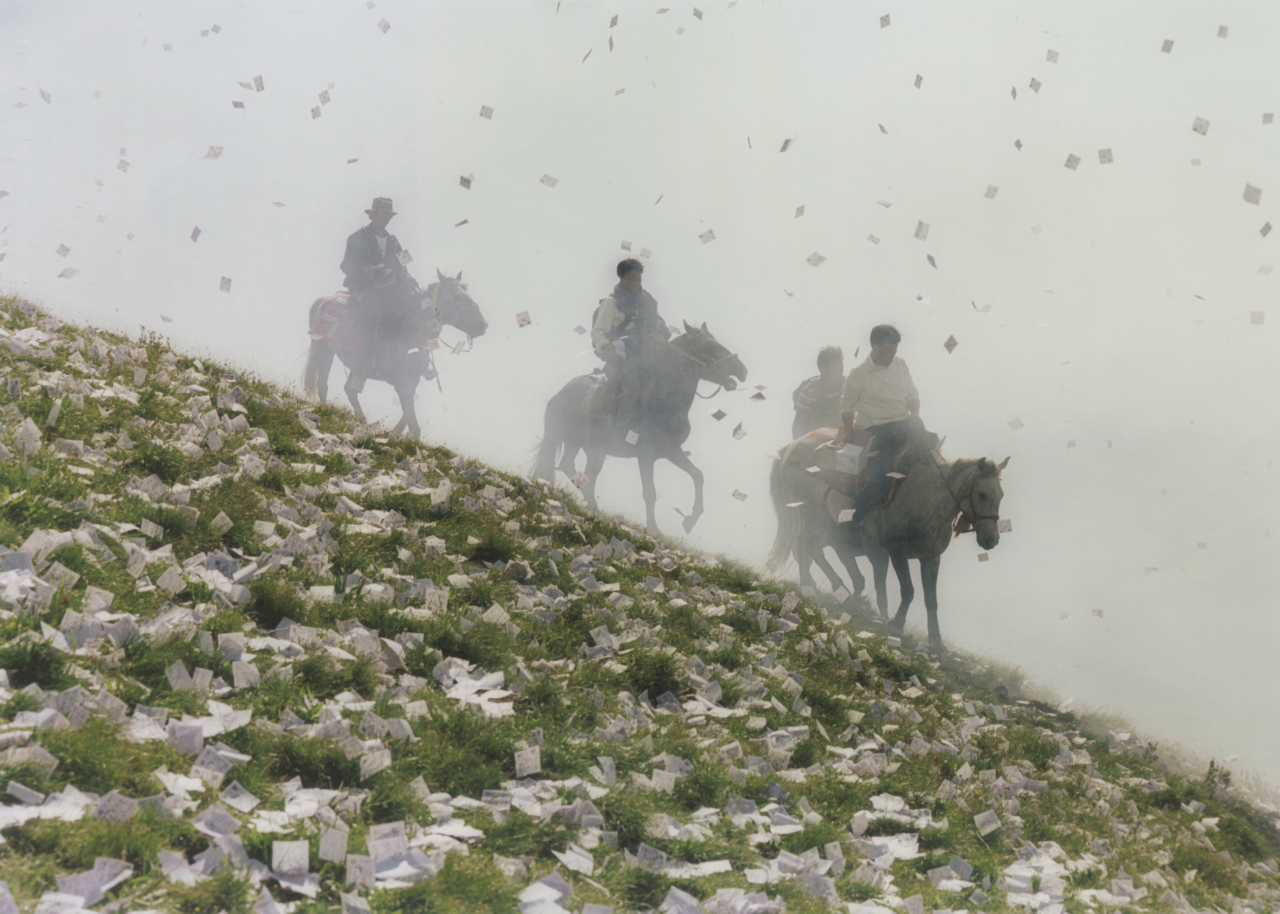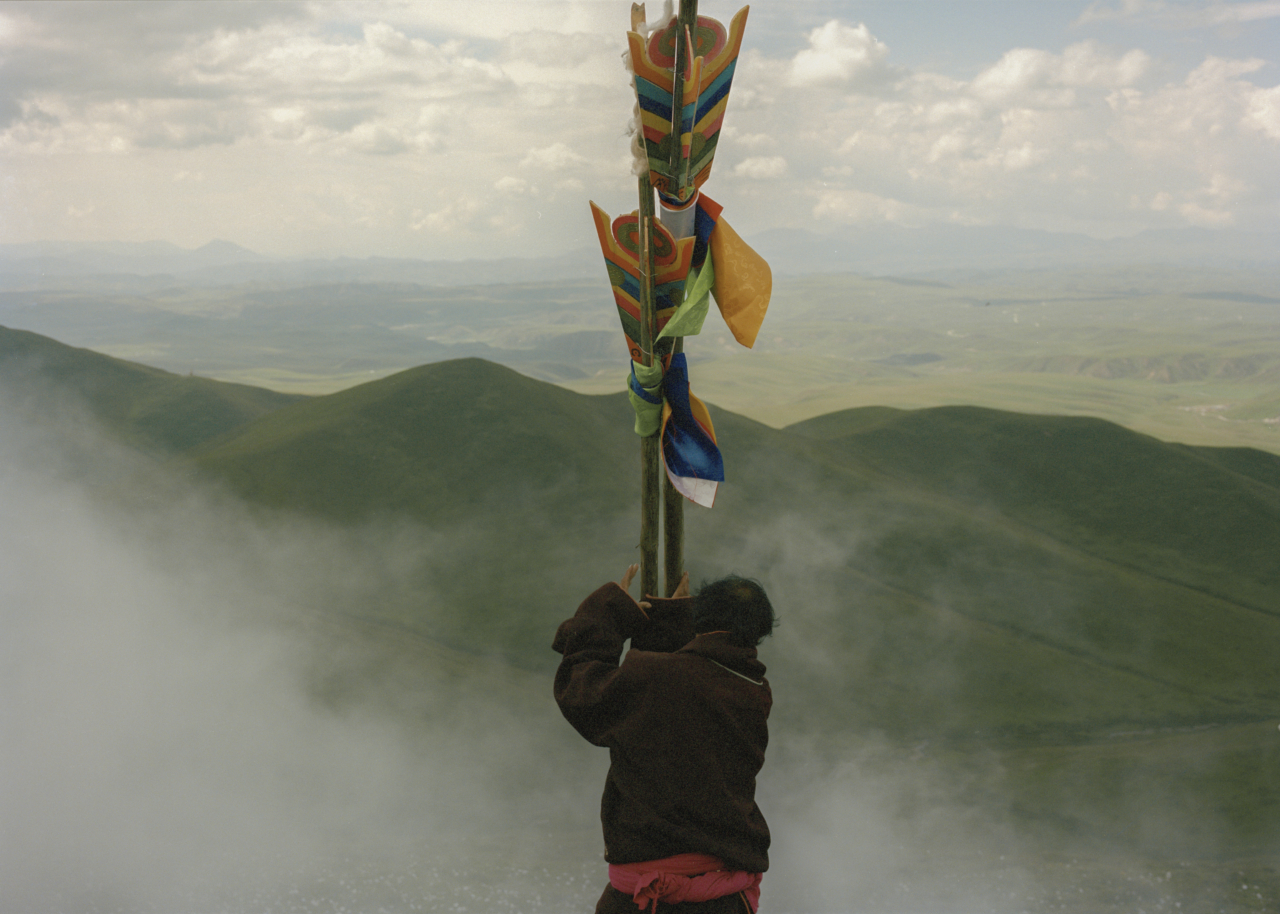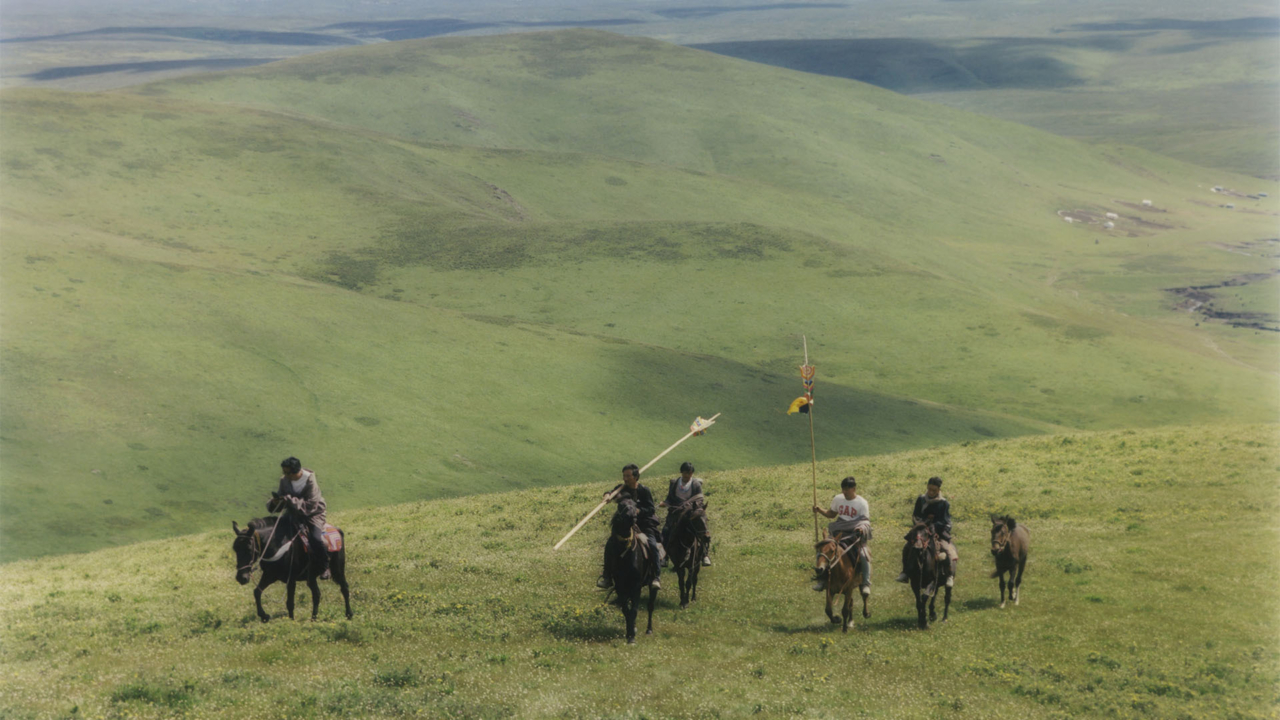
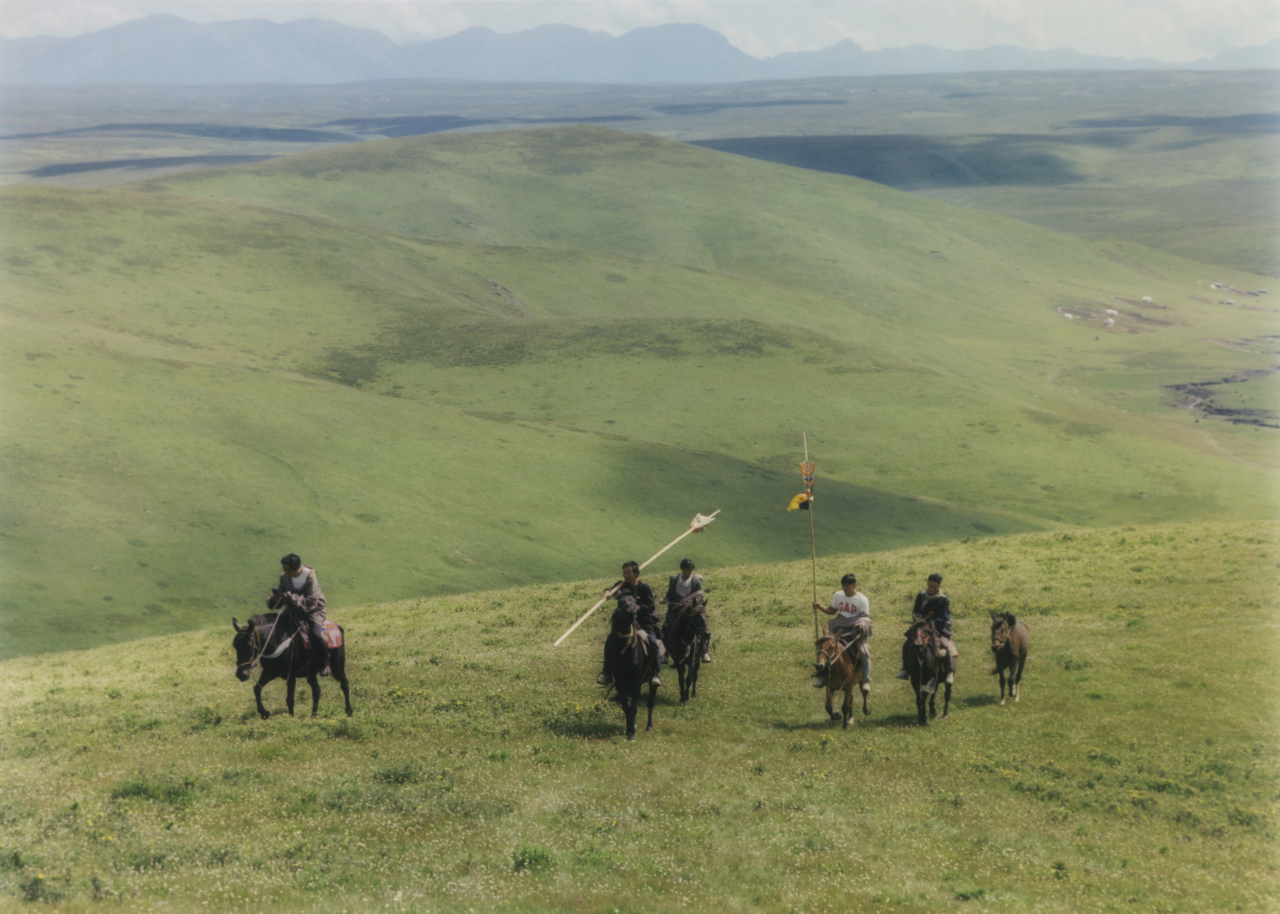
Words by Kim Yeshi
Photographs by Kin Chan Coedel
Laptse ceremonies are practiced all over the Tibetan Plateau as a means for people to connect with the environment and the natural and supernatural forces that influence their lives. Performed by the people of Ritoma in the Gannan area of Gansu several times a year, the ceremony is a gift for the senses: prayer flags fluttering in the wind, the sound of hoofs hitting the ground, chanting, songs praising the gods, billowing smoke releasing the calming smell of juniper. Clad in red chubas, or robes, men on stallions gallop to the top of a hill toward a conical edifice called the dashing to pay their respects and celebrate their local gods.
The dashings that crown hills, mountain tops, and the banks of rivers and lakes are a characteristic feature of the Tibetan landscape. Built to honor the local deities, they are witnesses to the deep connection between humanity and the landscape. The people and animals of the plateau live a life regulated by the cycles of nature. They need timely rain for the grassland to grow and provide grazing for their herds. They pray for their animals to be free of disease and hope to be spared heavy snow that will bury their yaks’ fodder and freezing temperatures that can be fatal to young sheep.
The landscape—stretches of grassland interspersed with hills and snowy peaks—is believed to be the abode of these gods, whose goodwill must be sought or maintained.





Prior to the spread of Buddhism on the plateau in the seventh century, the predominant worldview was Bon, a system of animistic worship which persists to this day. The practice of Bon centers on nine creator mountain gods, each identified with a particular sacred mountain. Below these main deities are thousands of lesser gods of various ranks, many known as sadak, or land owners, that dwell on the land, invisible presences closely tied to nature with which humans must contend.
When the Indian saint Padmasambhava came from India to Samye, near Lhasa, it is said that he had to cajole and subdue powerful mountain and local gods before a monastery could be built. He took a pragmatic approach and enlisted them into the Buddhist pantheon as protectors of the Buddhist doctrine and secured their support and commitment to this task.
The village of Ritoma, where the laptse ceremony illustrated in these pages takes place, is situated in the eastern part of Amdo Province, where the dominant god is Amnye Machen, who reigns over the mountain range that bears his name. Considered the chieftain of all the region’s gods, Amnye Machen is revered throughout Amdo, and pilgrimages that draw people from all over the region occur each year.

The arrows are a symbol of violence, but by placing them on the dashing, the men of the clans and families of an area vow not to fight and go to war with each other.
Ritoma’s mountain deities are subservient to Amnye Machen and dwell on five peaks. The main one is Amnye Tongra, a mountain shaped like a crouching tiger, the highest point in Ritoma and the scene of multiple laptses held throughout the year. The smaller ones are put on by clan members for their specific deities, held on particular lunar calendar dates. They can also be spontaneous, as part of a request to be granted favors or remove obstacles—think the recovery of a family member, success at exams, or finding a job. Larger laptses that honor Amnye Tongra bring together all the people of Ritoma and beyond. Those gathered make requests that center the community’s common good: timely rain, healthy animals, the absence of contagious diseases.
White tents are planted in an immense circle on the vast plain, and there is a three-day picnic and horse races.
In the weeks leading up to a laptse, women spin long threads of sheep wool, stretching out across the pasture, and men paint arrow tips. The men take the threads spun by the women, which are wrapped into skeins of white wool called mitak, and wrap the arrows together as a sign of unity between all the families and clans in the village. Mountains are seen as sites where the gods access the earth from their heavenly abode, and the mitak is the rope that bids them to climb down to earth to hear the wishes and prayers of humans.




On the day of the laptse, men representing all the clans and families of Ritoma don their best clothes and, bearing their clan banners and symbolic arrows, ride their stallions to the laptse site on top of the hill, dominated by the dashing. They bring yak dung to light the fire and begin the ceremony with offerings. They burn juniper branches and pour butter and tsampa, a roasted barley flour, into the fire, which is believed to have a purifying effect. All the while, they recite a three-page prayer that dedicates their offering of fragrant smoke first to the Buddha, dharma, and sangha, wishing that all sentient beings achieve enlightenment, that Buddhism spreads throughout the land, and that their monastery’s goals of maintaining the dharma be accomplished.
After that, the assembled request the deity to grant their worldly wishes, for their families and animals to remain healthy, and for the grassland to provide them with
plentiful grass and prosperity. The men vow to be generous to those less fortunate by making gifts of food or clothing.
Then the men climb the dashing to plant their arrows. The arrows are a symbol of violence, but by placing them on the dashing, the men of the clans and families of an area vow not to fight and go to war with each other. In the old days, the men planted real arrows, but now that they no longer fight, they place decorative ones with ornamental tips.





The dashing, which literally means ‘wooden arrows,’ is built around a central wooden pole—the sokshing, meaning tree of life or spine—which is placed at the center of the treasure vault. When making a new dashing, a hole is dug and filled with precious objects, substances, and weapons, symbolizing the men’s wish to put down their arms and live in peace. The sokshing is the heart of the structure and supports the poles bound in prayer flags and covered in hundreds of arrows provided by each family in the village.
A laptse is a ceremony of peace and unity, regularly bringing together the members of an area’s clans and factions. It marks the wishes of the gods, now dedicated to the Buddhist doctrine, to restore and maintain the harmony and balance of an area—and a commitment from humans to respect their wishes for the common good and the wellbeing of the environment.






PHOTOGRAPHY ASSISTANT Junjie Ye SPECIAL THANKS Norlha Atelier
This text is based on interviews with Jampa Dondup, a writer, poet, and native of the Ritoma, as well as papers by Xie Jisheng (“The Mythology of Tibetan Mountain Gods: An Overview”) and Katia Buffetrille (“A Bonpo Pilgrimage Guide to Amnye Machen Mountain”).
This story first appeared in Atmos Volume 09: Kinship with the headline “Between Earth and Sky.”
In Tibet, A Ceremony That Honors the Earth and the Divine
